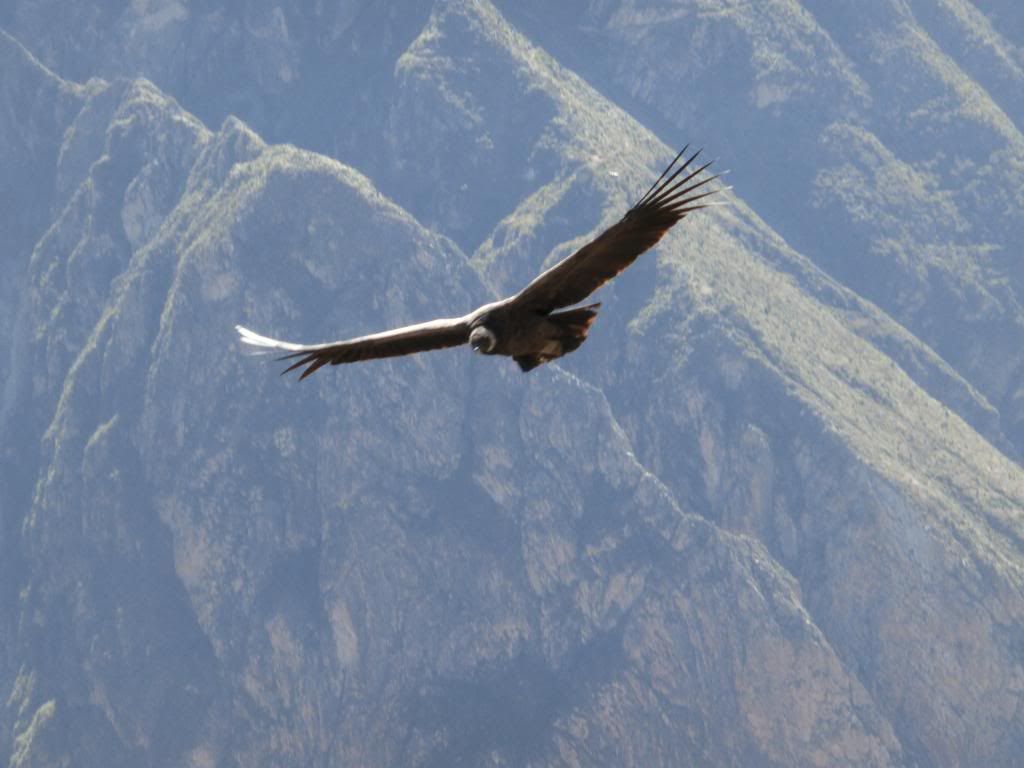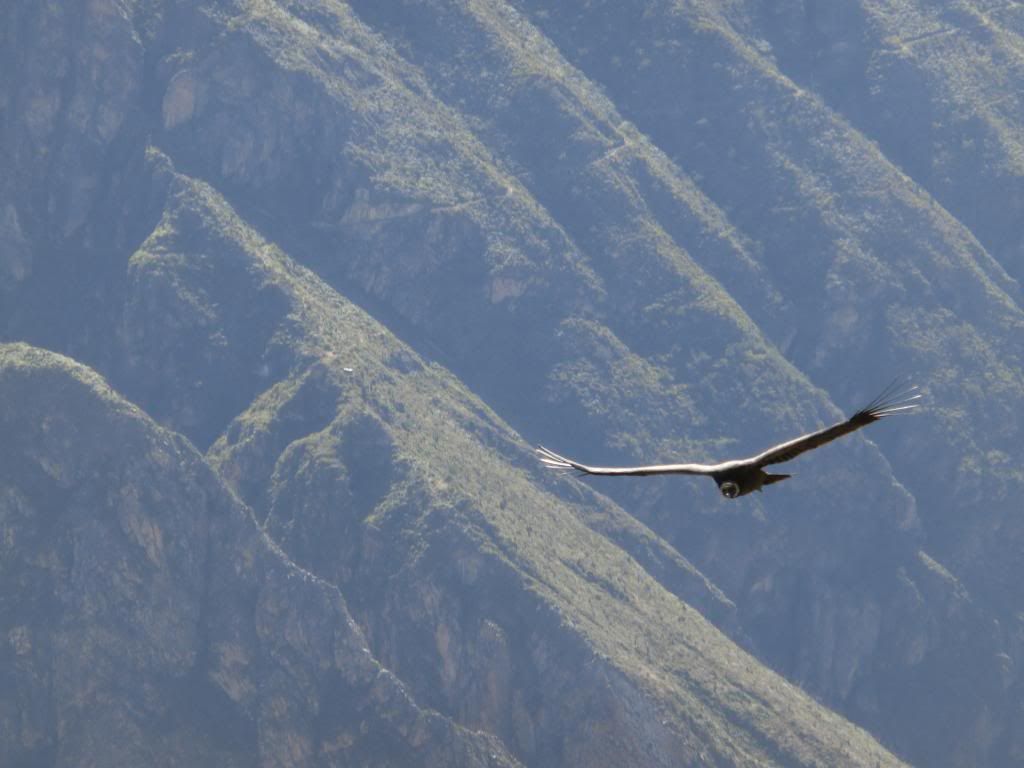 |
| best photos taken with my modest compact camera |
Wednesday, January 15, 2014
Valley of the Condors - Peru (D 5-8)
The timing could not be better. The Cruz del Condor was already packed with camera-clicking tourists when I arrived. After settling on a spot near the vehicle drop off point, the first Andean condors emerged from the steep canyon walls circling near another viewpoint 200 meters further down from where I was. I reckoned there were easily a dozen of them gliding around those lucky folks. It was the second day morning of my Colca Valley guided tour out of Arequipa. The city of Arequipa makes an ideal base for such a tour to the Colca Valley. With El Misti as backdrop, its Plaza de Armas is one of the most beautiful squares in the whole of Peru. Spent an afternoon visiting Convento de Santa Catalina - the most visited building from the Spanish era of the city. A city within a city, this beautiful place with its colors, flowers and little streets made me feel like I have traveled back in time. The spectacular 154km drive from Arequipa to Chivay, the main village of Colca Canyon, traversing the high plains of the vast, barren Salinas and Aguada Blanca National Reserve. After tasting the rarefied air of the Patopampa Pass (4910m), we dropped sharply into Chivay (3630m). Stayed the night at Colca Lodge - a spa and hot spring lodge by a river set in a tranquil ravine nearer to the town of Yanque. Too bad I got dropped off at the lodge rather late in the afternoon as it was pure magic soaking in one of the stone built thermal pools by river.
We were at the Cruz del Condor cliff around 8am when the condors are most active using the thermal uplifts that rise from the valley's shadowy depths. As with other wildlife viewing, the condor sighting was by no means assured so I was ecstatic to see them. Then bit by bit, condors began to appear around our viewpoint and before long, I was completely overwhelmed as they swished by from different directions. Andean Condors are magnificent birds. They mate for life, they both take care of their chick, they do not kill animals, only eat their remains, they live up to 50 years in the wild, and they look the way they do for very specialized reasons. The condors are mostly black, but males have a distinctive white collar around their necks and some white markings on their wings as well. Andean condors are massive birds (wingspan more than 3-meter and male weigh up to 15kg), among the largest in the world that are able to fly. Because they are so heavy, these birds prefer to live in windy areas where they can glide on air currents with little effort. Whether it was having a condor zipping by so close above my head or a family of condors that landed on a rock at the edge of the cliff barely 20 meters away, remained there even as I left, the Cruz del Condor was undoubtedly the finest and most awe-inspiring moment of the entire trip. That is saying a lot especially in a trip that also included a little known place called Machu Picchu.
Subscribe to:
Posts (Atom)
